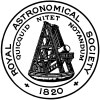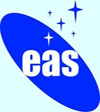In-situ and remote characterisation of minor bodies
Principal contact: A. Fitzsimmons (a.fitzsimmons@qub.ac.uk )
Organisers: A. Fitzsimmons (QUB, UK), S. Green (The Open University, UK)
Space missions are currently providing a wealth of data on the physical properties on minor bodies. The analysis of Stardust samples is continuing apace and ROSETTA has started its asteroid flyby campaign. Meanwhile, ground-based reconnaissance has provided a wealth of data on the physical characteristics of various populations in the Solar System, from Near-Earth Objects through to Trans-Neptunian Objects. These data have led to the realisation that our once simplistic models of the composition and evolution of these bodies requires significant revision. European scientists have been at the forefront of the development of new models of the dynamical evolution of the Solar System. The goal of this session will be to outline what we now know about comets, asteroids and TNOs, and what we will be able to learn in the future. With ROSETTA en-route, MARCO POLO in phase A, Pan-STARRS starting operations and site selection for ELTs taking place, the aim of the session will be to plan for the next decade of Solar System discoveries.
Scientific Programme
| Tuesday 21st April | ||
| 14:00 | Spectroscopic Investigation of Small NEOs | Sam Duddy |
| 14:15 | The Marco Polo Mission: A Sample Return from a Near Earth Object for Laboratory Studies | Ian Franchi |
| 14:30 | Surface Properties of Main-Belt Comets | Henry Hsieh |
| 14:45 | Photometric study of Distant Comets: C/2002 VQ94 (LINEAR) and 29P/Schwassmann-Wachmann-1. | Alexandra Ivanova |
| 15:00 | Characterising the Members of the First TNO 'Collisional Family' | Colin Snodgrass |
| 15:15 | A Herschel Survey of the Transneptunian Region | Pedro Lacerda |










